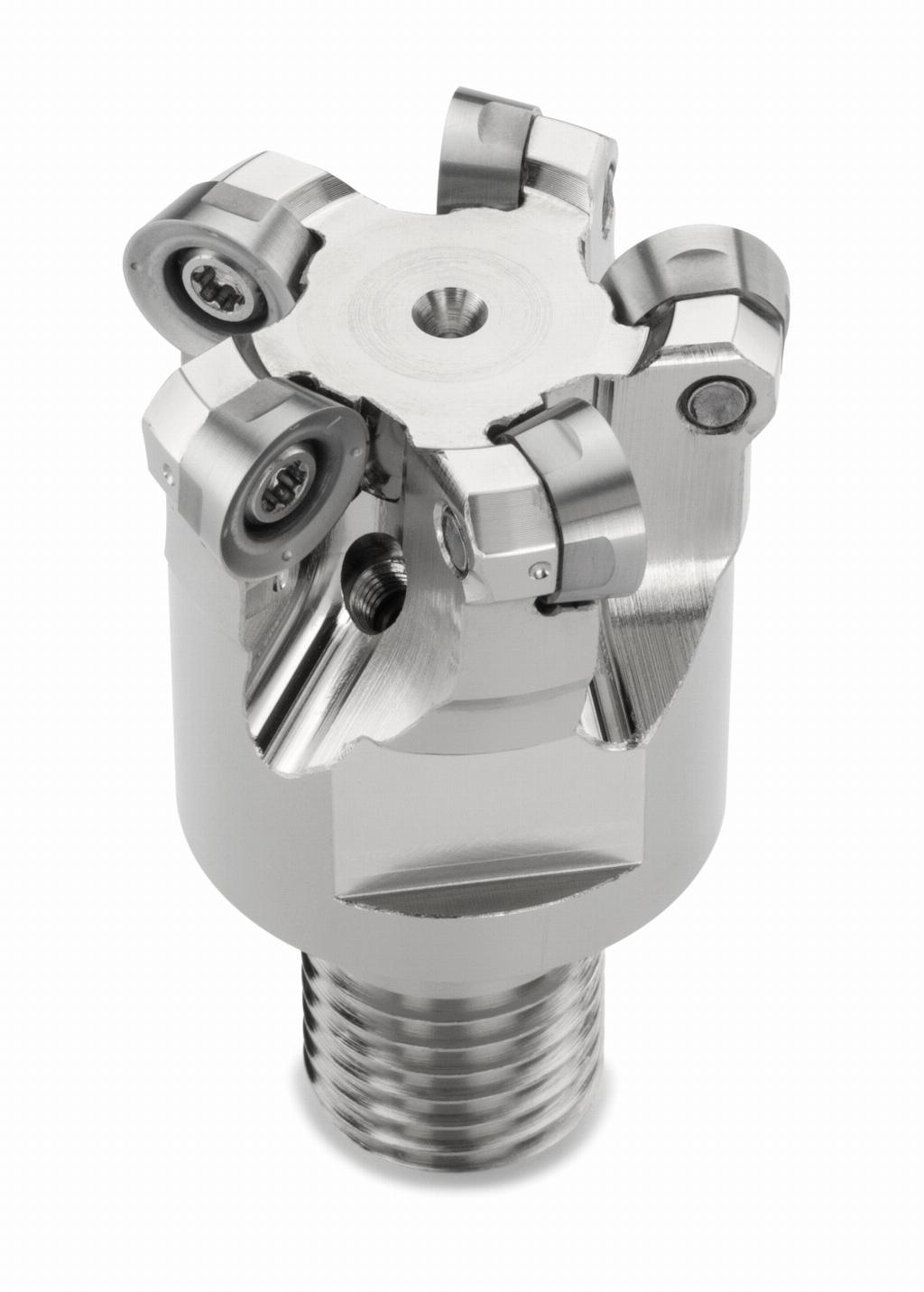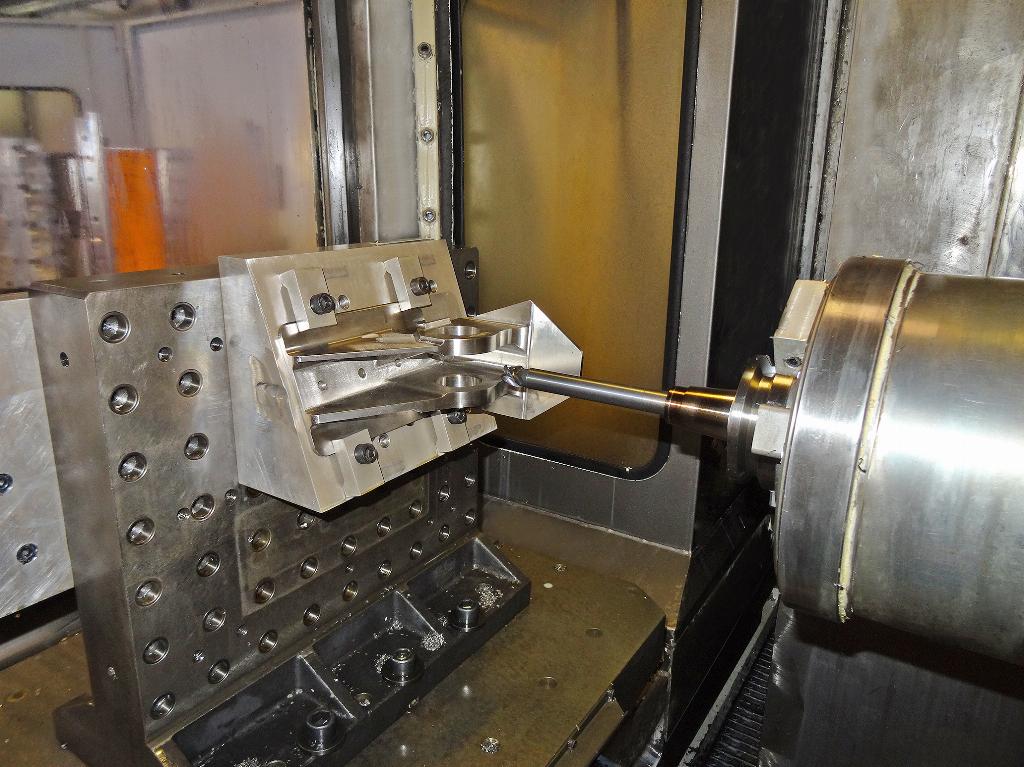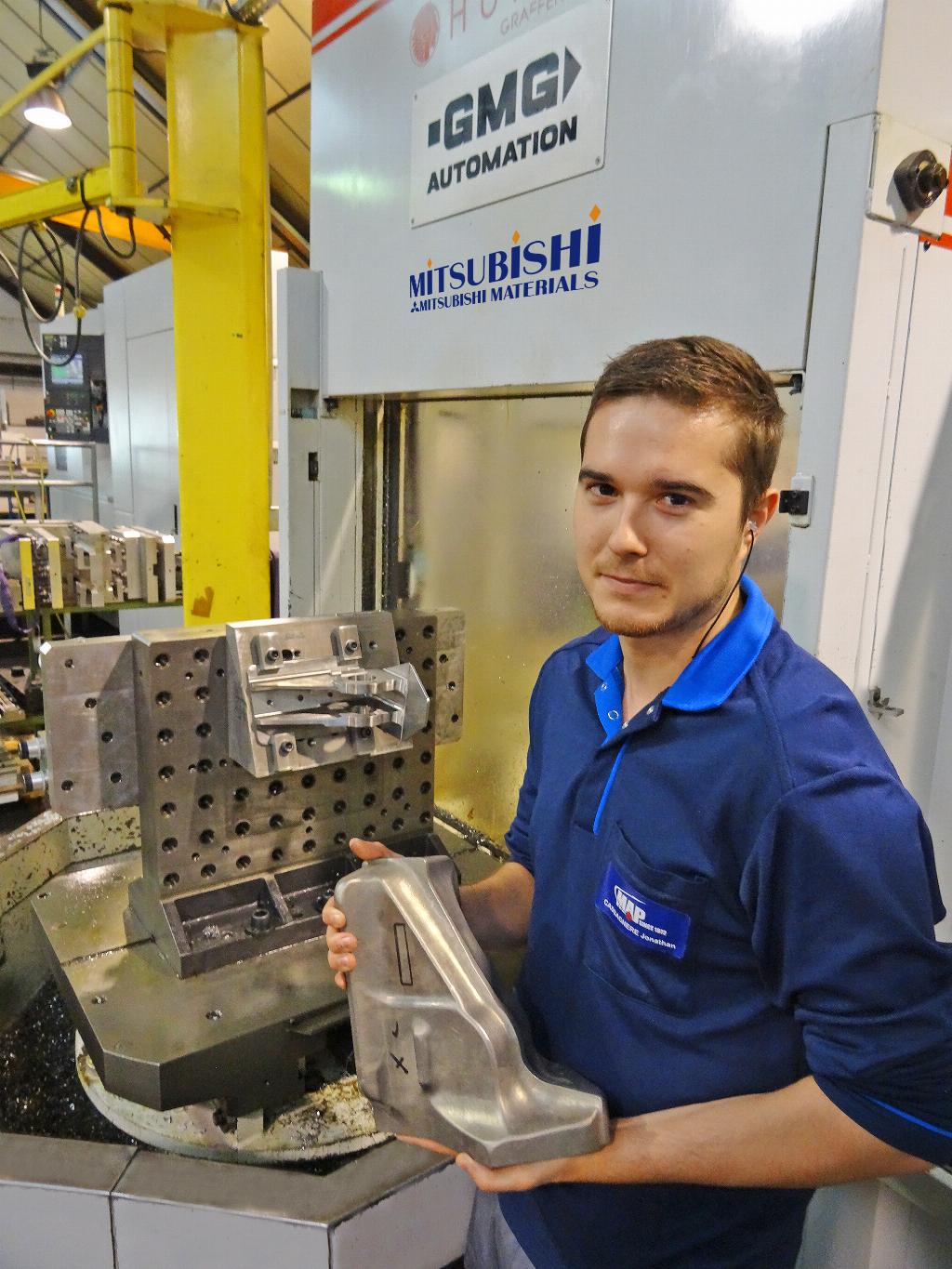High flying projects!

Encompassing the entire machining process as one project, cutting tool specialist, Mitsubishi Materials helps family-owned Mécanique Aéronautique Pyrénéenne optimise its milling applications. Aerospace Manufacturing reports.
By giving priority to methods, quality control and know-how, Mécanique Aéronautique Pyrénéenne (MAP) says it is building its reputation on solid foundations, showing continuous growth in its activity.
With 260 employees to rely on, MAP can boast a wide-range of skills as an aerospace subcontractor for machining complex parts and producing subassemblies. The attention to developments in the industry means it is maintaining momentum in performance improvement and can draw on the expertise of its cutting tools supplier, Mitsubishi Materials, for optimising strategies when machining complex parts.
At the controls of this family business, Xavier and Philippe Jean-Baptiste have backed the skills of the staff to improve production performance in the context of projects with targeted actions. In the main machine shop used for small and medium-sized parts, a multi-disciplinary team made up of Pierre Lafitte, machine shop manager, Thierry Giordano, programming manager and Philippe Sebie, cutting tools manager, decided in 2014 on prioritising the machining of titanium braces.
With a machining cycle time per part close to that of one operative’s shift, manufacturing in batches of 10-20 braces takes the equivalent of one week per machine or even more. Time saving became a priority in order to improve the economic return on this item and to prevent bottlenecks in the machine shop, which was being put under great pressure by the growth in MAP’s activity.
Inside knowledge

As the first to be affected, the internal tool specialist started making enquiries with cutting tool suppliers that had a good reputation and know-how in the machining of difficult-to-cut materials. Following preliminary discussions, Mitsubishi Materials’ technical salesman, Julien Legland set out to treat the request from MAP as a complete project, encompassing all machining process aspects as well as the actual cutting itself, from roughing through to finishing. Sebie and his colleagues expressed interest in having a solution that would incorporate the choice of tools and the optimisation of the tool paths and parameters. Having had a very favourable experience with Mitsubishi Materials’ Coolstar VF solid end mills, a series of tools particularly well-suited to working with stainless steels, titanium and Inconel, he kept Mitsubishi Materials on his shortlist before the final evaluation of proposals.
In close cooperation, at Mitsubishi Materials, Christophe Aurousseau, aerospace project engineer and Grégory Lafon, application engineer, carried out a detailed analysis of a key part in the production range. The brace component made of TA6V requires precise final geometric tolerances, but also needs significant material removal during the initial stages of machining. In the past, the 25mm diameter HSS milling cutter moved at a slow feedrate to face machine almost all of the main 160mm faces of the part. Due to rapid tool wear, the range of machining required the allocation of a separate tool for each operation. These non-standard tools had to be utilised for as long as possible which meant re-grinding them several times. Despite re-grinding these tools still needed to be replaced at least twice a month. In the light of this fact, Aurousseau, in contact, for CAM with Mitsubishi Materials’ European Project department, decided to propose a more efficient strategy with standard tools developed by Mitsubishi Materials.
MAP and Mitsubishi Materials were in regular contact to adjust and validate the recommended solutions. From this study, the Mitsubishi Materials team devised a complete process based on a package of five tools instead of the previous 15. The supplier’s offer, put into perspective in a machining simulation model, brought together the reasoning regarding the choice of tools, the range of machining processes, time estimate and assessment of the economic gain.
The choice and performance of the tools were decisive for MAP’s tools specialist, who had a competing offer with a much greater number of tools and longer machining times.

“Our tooling costs went down significantly now that we have standard tools such as the ARP round insert cutter, specifically designed for machining heat-resistant materials, replacing the costly special tools,” explains Sebie. “Also, the 16 to 25mm diameter screw-in heads of the iMX indexable end mills are mounted on 110mm and 180mm carbide shanks. They feature unfailing rigidity that, in spite of very high feedrates, gives us an appreciable improvement in performance when compared to the old tools and produces a surface finish free from vibration marks. The iMX exchangeable head end mills are interchangeable on the machine, with dimensional repeatability lower than 5µm, and therefore saves valuable the operative time.”
Sebie carried out analytical monitoring of production in the first year. Being an authority regarding this project, he optimised tool management logistics with Legland and overall production management with the support of Lafon.
From the operatives’ point of view, because tool longevity has vastly increased, tool changes are far fewer and much easier to carry out. As the machine shop manager sees it, this project management shared with the Mitsubishi team has also contributed to giving greater consideration to the production environment. Additionally, the improved quality of the machining is appreciated by the assembly teams.
However, Lafitte is delighted most of all by the benefits obtained in production: “For a series of 10 parts, we have saved the equivalent of one machine day per week when using a two-shift pattern. Our old schedule was often very tight and we often had to make a split delivery, which is no longer the case.”

A fresh perspective
In agreement with the members of the improvement group, Thierry Giordano appreciates the contribution from outside: “Regarding the machining simulation, the programming department applied the recommendations made by the team at Mitsubishi Materials. The machining strategy, developed from a fresh perspective, formed a solid basis that we have refined together with the observations made by the machine shop and tooling managers. This has put the process on a formal company process footing.”
Since 2015, several parts projects have followed the same preparation process to obtain important benefits, especially for an aluminium-lithium HSM application with a dedicated milling cutter: the AXD4000.
Legland emphasises the importance of the package represented by this project concept at Mitsubishi Materials: “We put together a multi-disciplinary team in-house to be able to provide a product and service solution. On the ground, we keep up technical monitoring and create the conditions for a secure supply of tools. Our commitment makes the difference.”
Philippe Jean-Baptiste and Jean-Robert Fournier, MAP’s business and development manager, have taken note of the strategic advantage of a skills cross-over of the expertise of the specialists who work closest to production with the supplier’ project team. The involvement of the Mitsubishi Materials team, whose quality of service and innovative products are well-suited to the aerospace manufacturing environment, helps to position them in a relevant way for future projects from aircraft component manufacturers.










